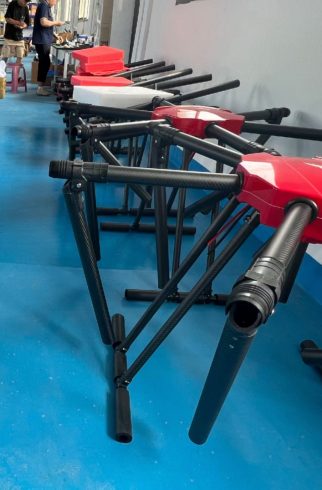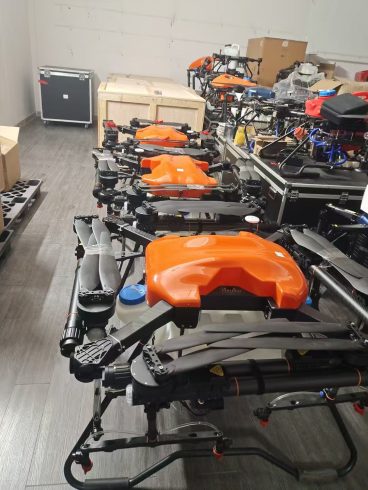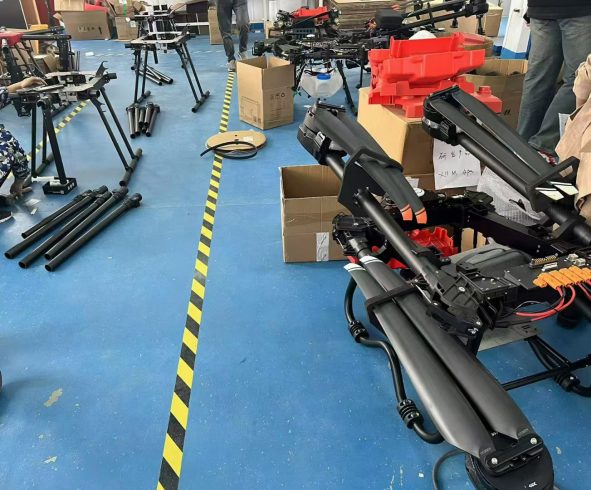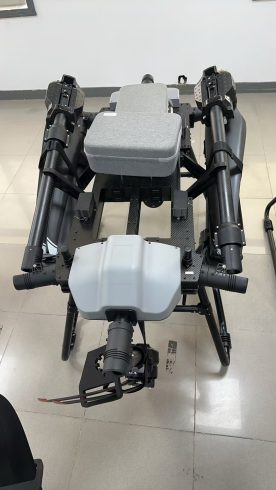![图片[1]-Mastering Agricultural Drone Spraying Techniques: Precision, Efficiency, and Best Practices-msoen](https://www.msoen.com/wp-content/uploads/2025/03/3641be4ec680-1-768x1024.jpg)
![图片[2]-Mastering Agricultural Drone Spraying Techniques: Precision, Efficiency, and Best Practices-msoen](https://www.msoen.com/wp-content/uploads/2025/03/34b409be4e44-1-768x1024.jpg)
![图片[3]-Mastering Agricultural Drone Spraying Techniques: Precision, Efficiency, and Best Practices-msoen](https://www.msoen.com/wp-content/uploads/2025/03/3641be4ec680-768x1024.jpg)
Dive into advanced agricultural drone spraying techniques, including nozzle selection, flight optimization, and software integration. Learn how to maximize crop yield while minimizing chemical waste and environmental impact.
Mastering Agricultural Drone Spraying Techniques: Precision, Efficiency, and Best Practices
Agricultural drones have unlocked unprecedented precision in crop management, but their true potential is unlocked only through mastery of spraying techniques. From nozzle configuration to flight path planning, every detail impacts the efficacy, safety, and cost-efficiency of drone-based applications. This article breaks down essential spraying techniques, equipping farmers and agronomists with actionable insights to optimize their operations.
Core Principles of Effective Drone Spraying
Successful drone spraying hinges on balancing three factors:
- Chemical Coverage: Ensuring uniform deposition on target areas.
- Minimizing Drift: Reducing off-target chemical waste and environmental harm.
- Operational Safety: Protecting drones, crops, and personnel.
Let’s explore the techniques that achieve these goals.
Key Spraying Techniques and Technologies
- Nozzle Selection and Configuration
Nozzles determine droplet size, spray pattern, and chemical flow rate.
- Droplet Size:
- Fine droplets (100–200 µm): Ideal for systemic pesticides but prone to drift.
- Coarse droplets (300–500 µm): Reduce drift but require higher volumes for efficacy.
- Adjustable nozzles: Allow on-the-fly adjustments based on crop density and pest type.
- Spray Patterns:
- Electromagnetic nozzles: Create conical patterns for overlapping swaths in windy conditions.
- Flat-fan nozzles: Optimal for row crops, ensuring even coverage between plants.
Pro Tip: Use nozzle flow rate calculators to match output with drone speed (e.g., 1–3 L/ha at 5–8 m/s).
- Flight Altitude and Speed Control
- Altitude:
- Maintain 1–3 meters above canopy to balance drift reduction and coverage.
- Adjust for tall crops (e.g., corn) using height-sensing drones.
- Speed:
- Slow speeds (5–8 m/s) enhance coverage but increase flight time.
- Faster speeds (10–12 m/s) suit large fields but require higher flow rates.
Best Practice: Sync altitude and speed with nozzle settings using AI-driven flight controllers.
- Variable-Rate Spraying (VRS)
Dynamic adjustment of chemical application rates based on real-time data:
- Satellite Imagery: NDVI maps highlight stressed zones needing higher doses.
- Multispectral Sensors: Detect pest hotspots and modulate flow rates accordingly.
- GPS Waypoints: Assign specific application rates to different field sections.
Case Study: A 2023 trial in Iowa showed VRS reduced herbicide use by 45% while maintaining soybean yields.
- Obstacle Avoidance and Path Planning
- LiDAR/3D Mapping: Plan routes around trees, power lines, and terrain irregularities.
- Swarm Intelligence: Coordinated fleets avoid collisions and optimize coverage in complex layouts.
- Geofencing: Automatically reroute drones away from sensitive areas (e.g., waterways).
Advanced Techniques for Specific Challenges
- Wind Management
- Doppler Anemometers: Measure crosswinds in real time; drones adjust nozzle tilt and flight paths.
- Shielded Nozzles: Deflect spray downward during gusts to minimize drift.
- Thermal Imaging for Early Morning Spraying
- Use thermal cameras to identify dew-covered foliage, applying chemicals before droplets evaporate.
- Electrostatic Spraying
- Charged droplets adhere better to leaves, reducing waste by 30% compared to conventional methods.
Best Practices for Optimal Results
- Pre-Flight Preparation
- Calibration: Clean nozzles and validate flow rates with precision scales.
- Weather Checks: Avoid spraying when winds exceed 10 mph or humidity is below 40%.
- Post-Spray Analysis
- Droplet Sensors: Attach devices like DDAC to measure deposition patterns.
- Software Analytics: Use platforms like Ag Leader to compare spray maps with yield data.
- Safety Protocols
- Buffer Zones: Maintain 50–100 m from residential areas during spraying.
- Battery Safety: Store lithium-ion batteries in fireproof containers post-flight.
The Future of Drone Spraying Techniques
Emerging innovations promise even greater precision:
- AI-Predictive Spraying: Machine learning models forecast pest outbreaks and prescribe application schedules.
- Shape-Memory Nozzles: Self-adjusting nozzles optimize droplet size mid-flight based on environmental data.
- Robotic Swarms: Fleets of micro-drones target weeds individually, eliminating the need for blanket sprays.
Conclusion
Mastering agricultural drone spraying techniques transforms this technology from a novelty into a productivity powerhouse. By optimizing nozzle settings, flight dynamics, and adaptive software, farmers can achieve unmatched accuracy, reduce chemical costs by up to 60%, and safeguard ecosystems. As AI and robotics advance, these techniques will evolve into standard practices, setting new benchmarks for efficiency and sustainability in global agriculture.
Target Keywords: agricultural drone spraying techniques, drone nozzle types, variable-rate spraying, drift reduction in drones, precision agriculture spraying.












暂无评论内容